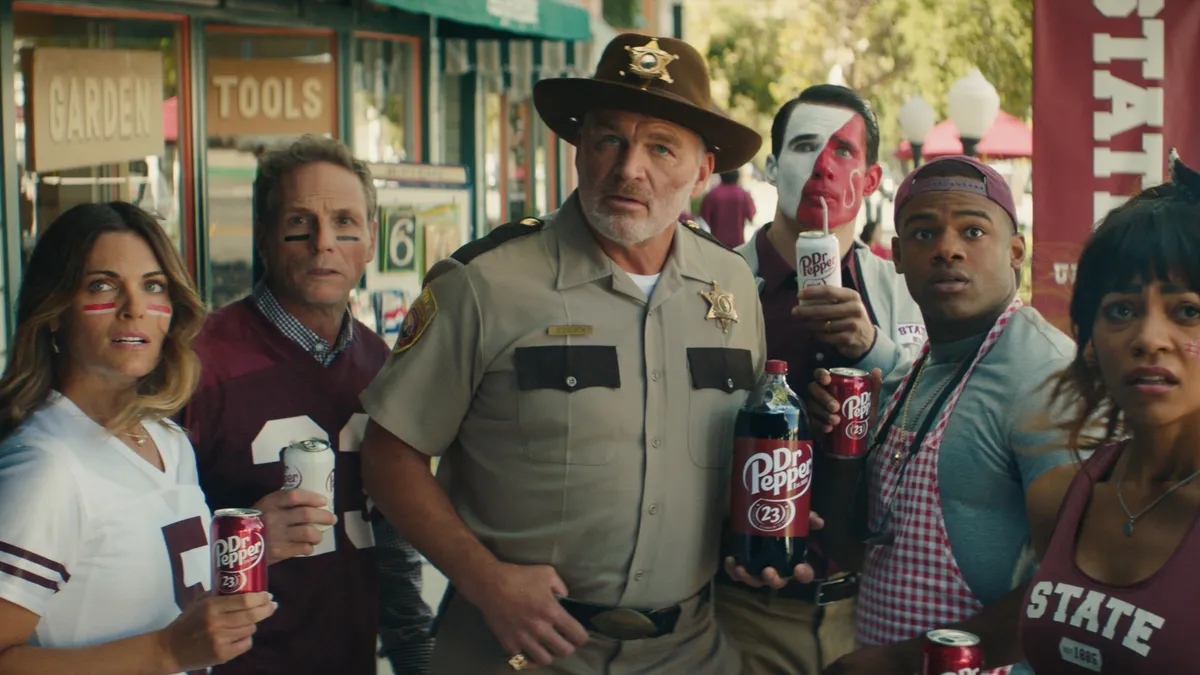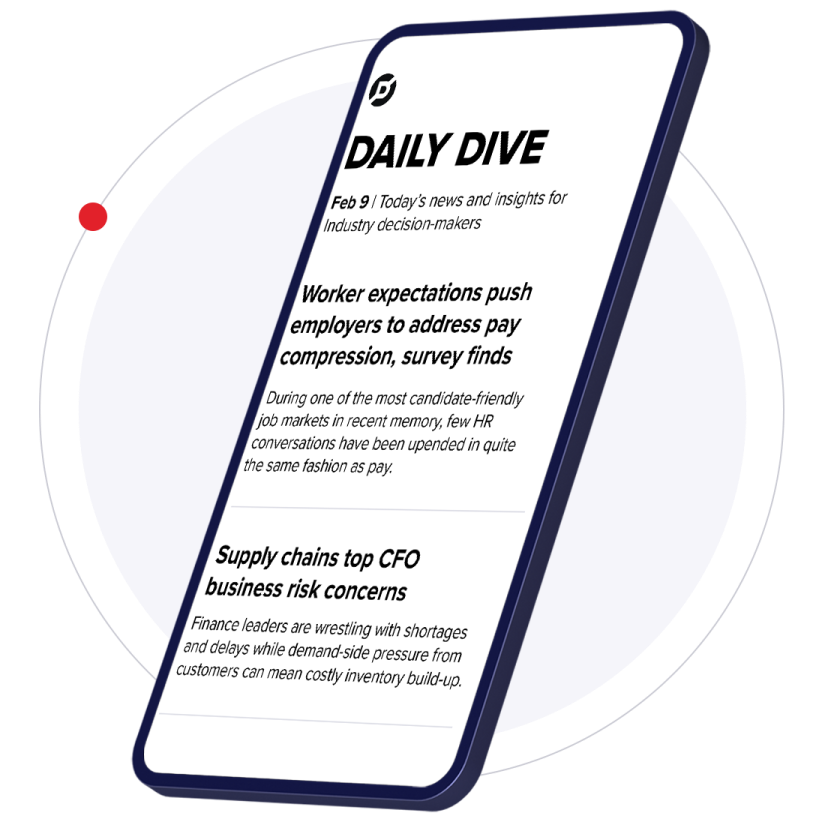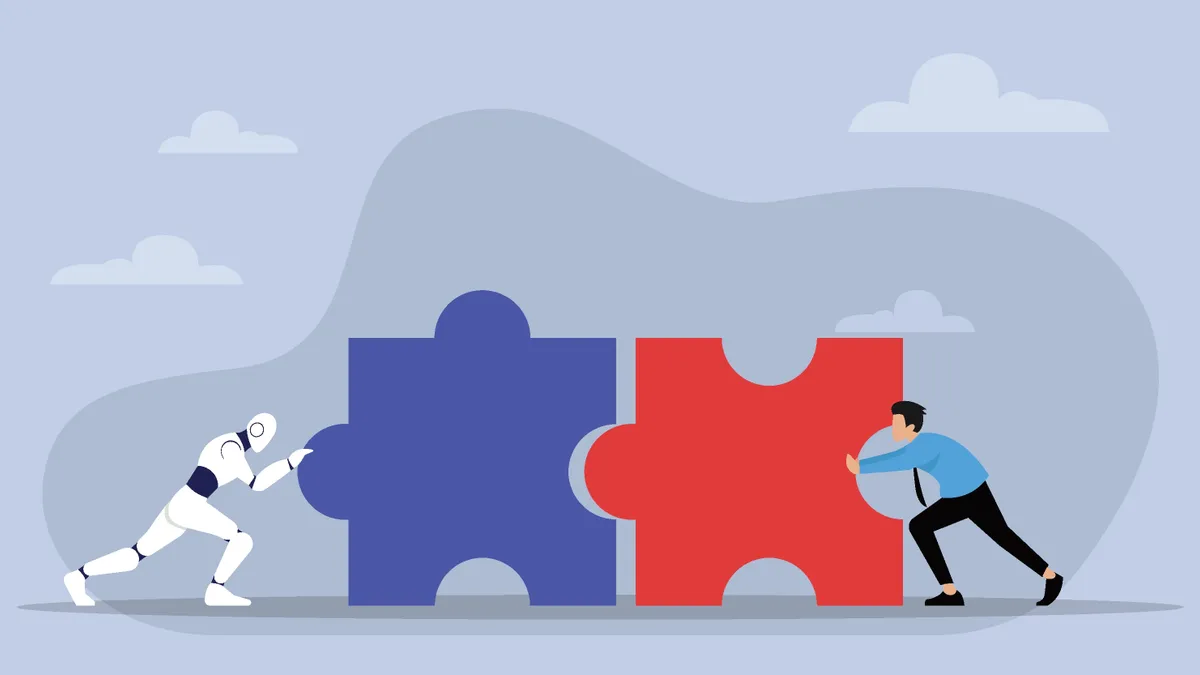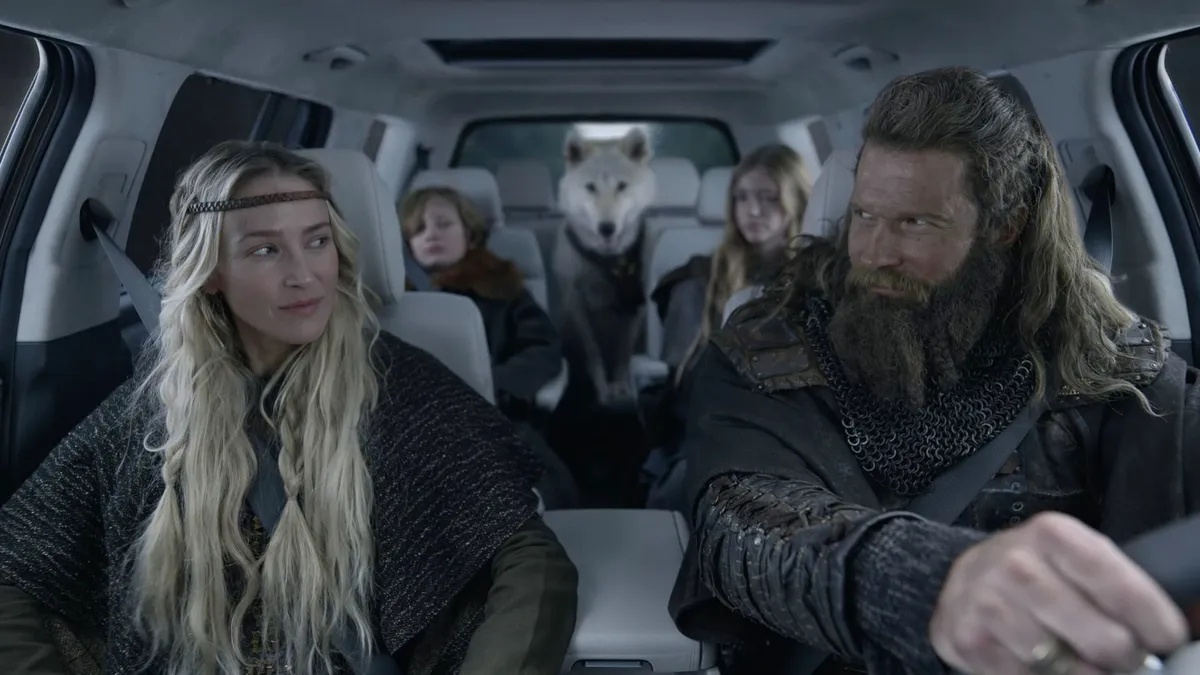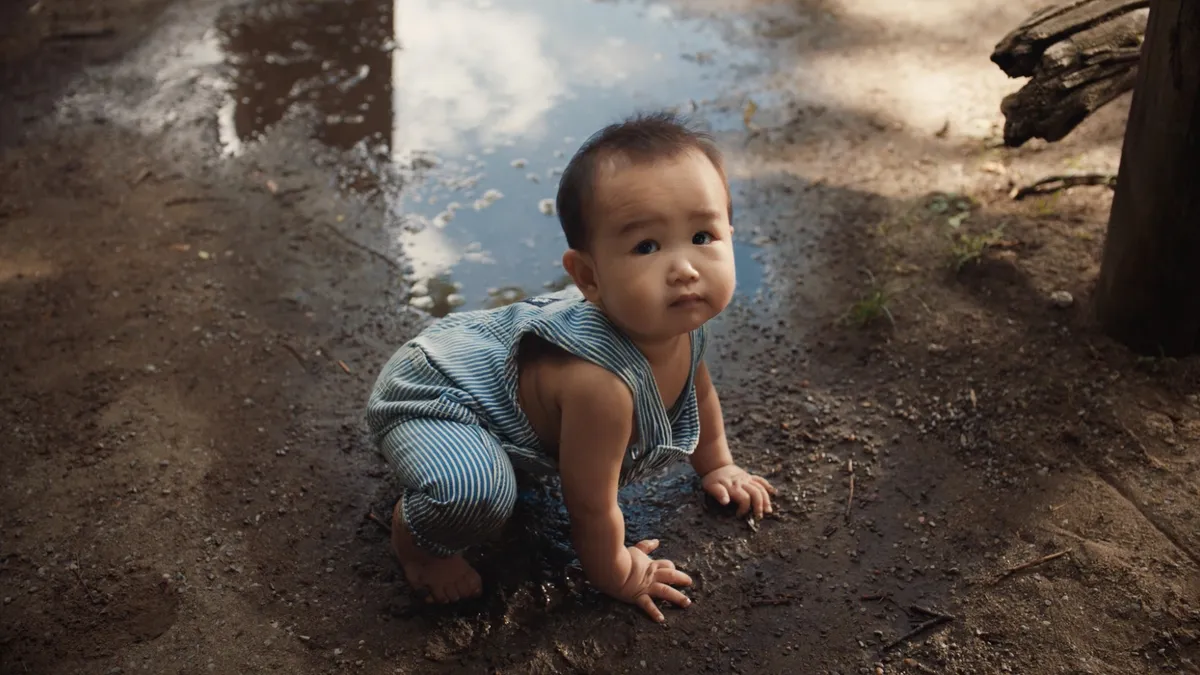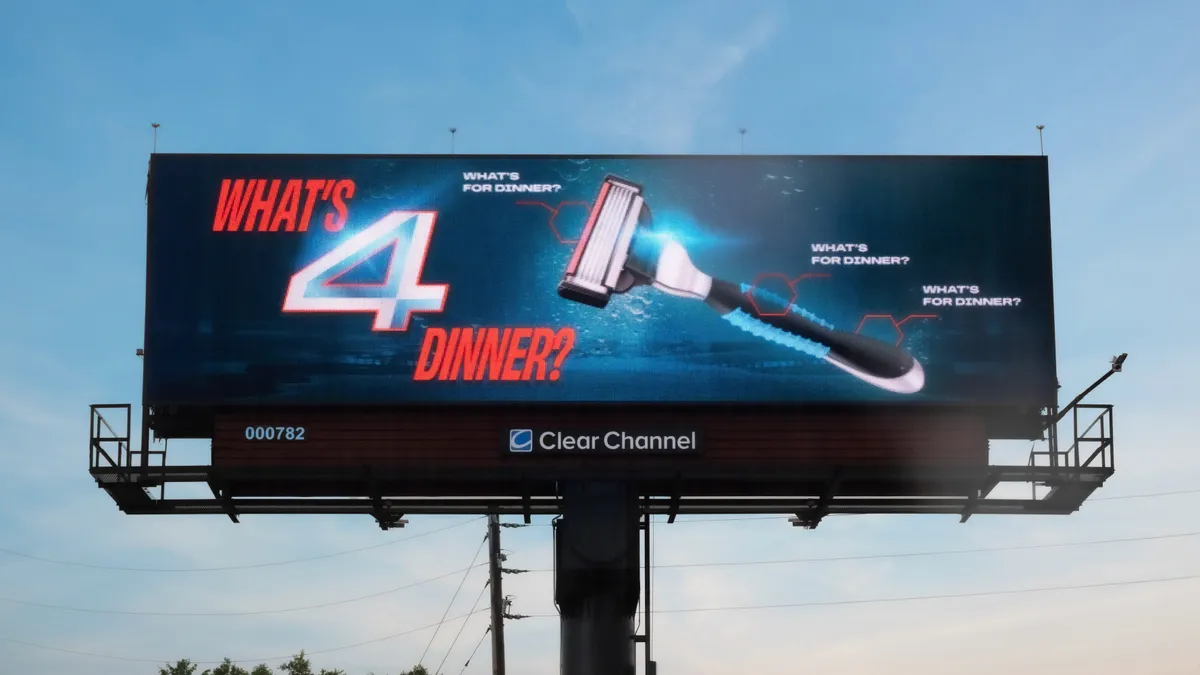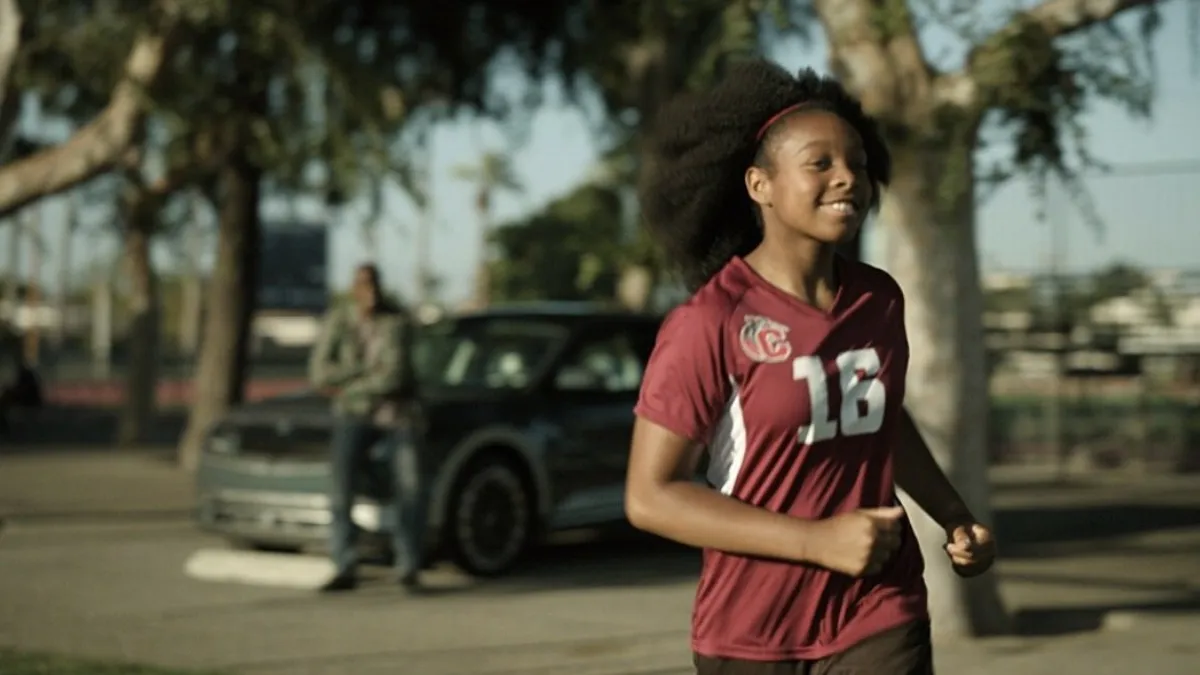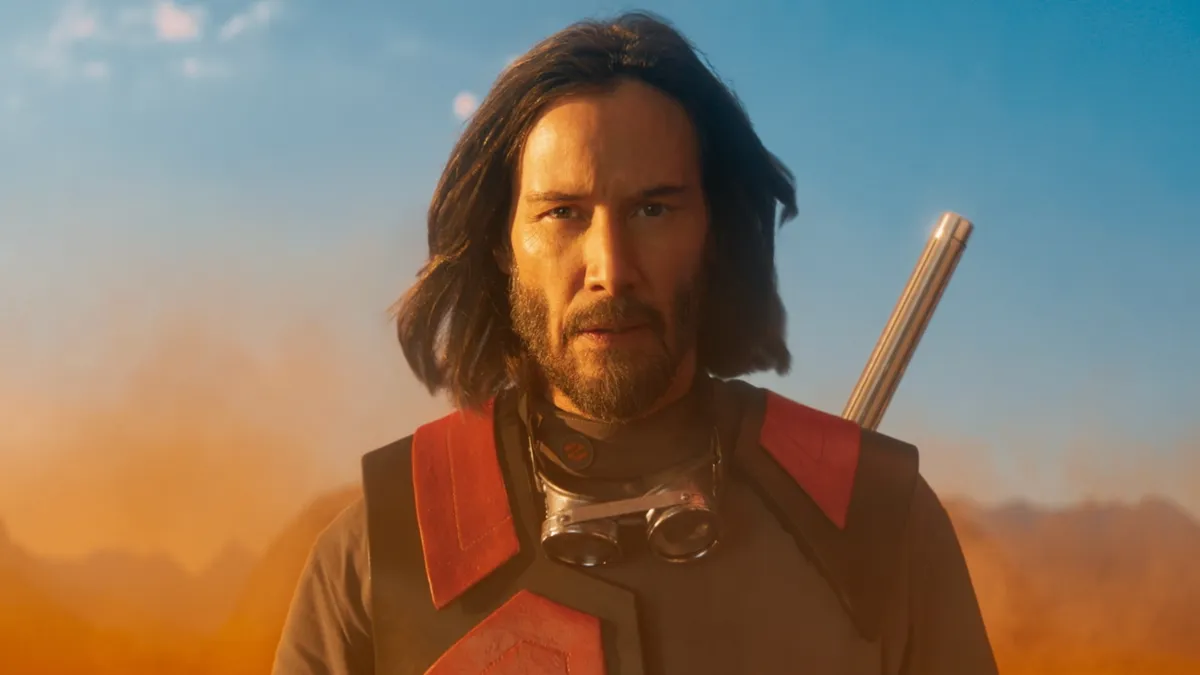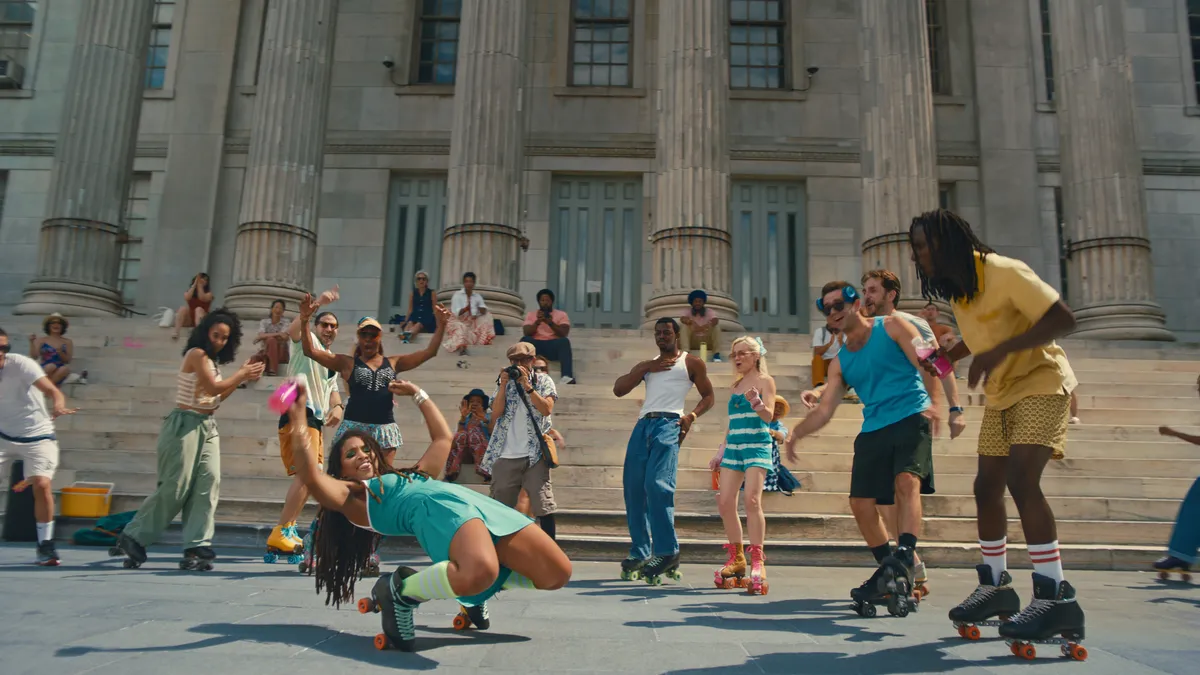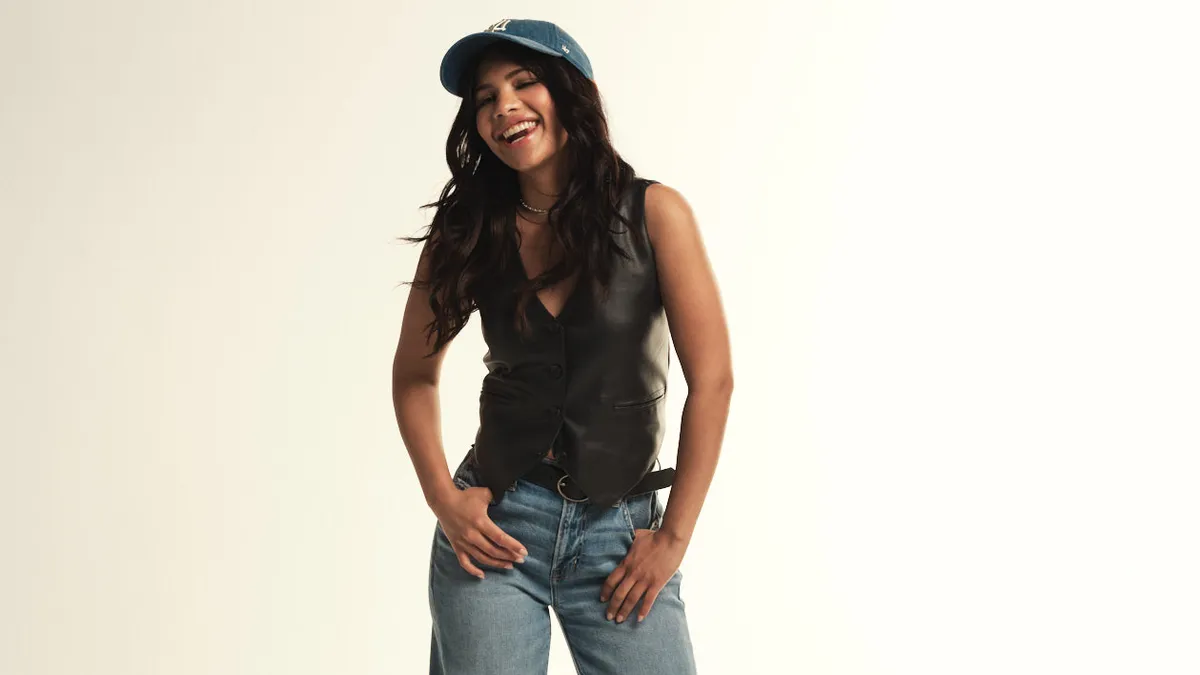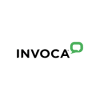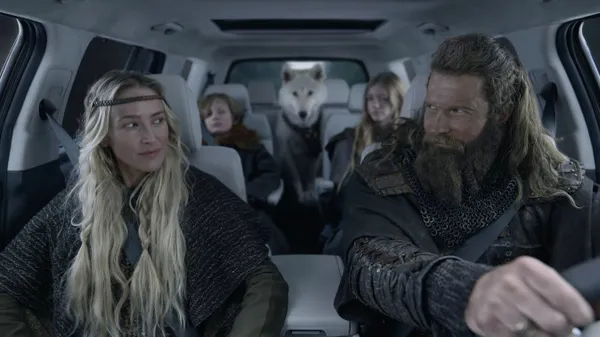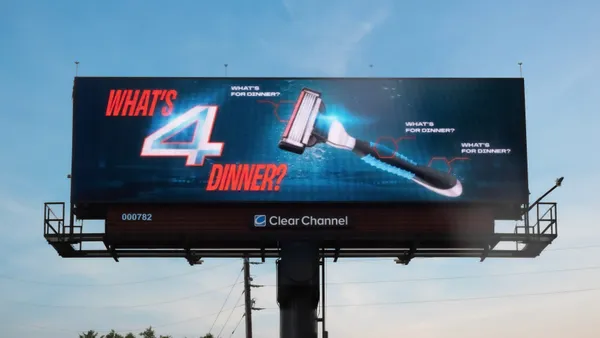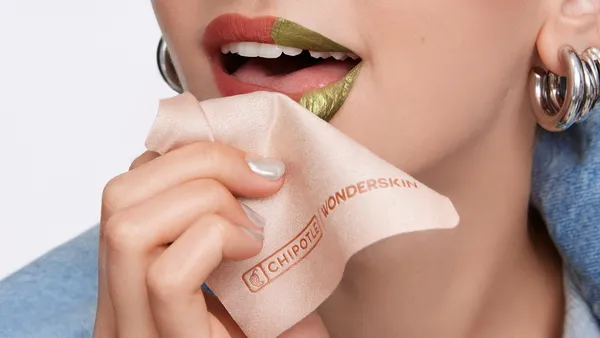As its vintage advertising maintained, it’s Dr Pepper time. The soda brand made headlines this month with news that it is now the number two carbonated soft drink in the U.S. behind Coca-Cola and passing Pepsi, which long held the spot, according to Beverage Digest data shared with Marketing Dive. The sales data is in line with consumer brand perceptions: Dr Pepper ranked 41st, two spots ahead of Pepsi, in FutureBrand’s recent Consumer Index report.
“In comparison to Pepsi, consumers view Dr Pepper as having a more promising future, doing a better job at keeping up to date and, importantly, being more distinctive and different than Pepsi,” said Lynne Field, head of strategy at FutureBrand.
Since the 2018 acquisition that brought together Keurig Green Mountain and the Dr Pepper Snapple Group, Dr Pepper’s parent company has remained committed to the brand amid a portfolio-wide double-digit increase in marketing spend. Dr Pepper’s success can be attributed to a combination of investment and patience, said Brad Rakes, senior director for brand marketing at Keurig Dr Pepper.
“It really is a commitment across the board, not just in things like content and media, but also investment in prioritization and making sure that Dr Pepper continues to be the workhorse for the organization,” the executive said.
As it has looked to differentiate itself from cola wars stalwarts Coke and Pepsi, Dr Pepper has embraced its identity as a disruptor with a one-of-a-kind taste that provides consumers a treat and creates connections between them. In the last few years, its marketing has walked the tightrope between being consistent and breaking the rules.
“The brand is 140 years old,” Rakes said. “If you do the same things you were doing 140 years ago, that’s not going to fuel growth.”
First mover in college football
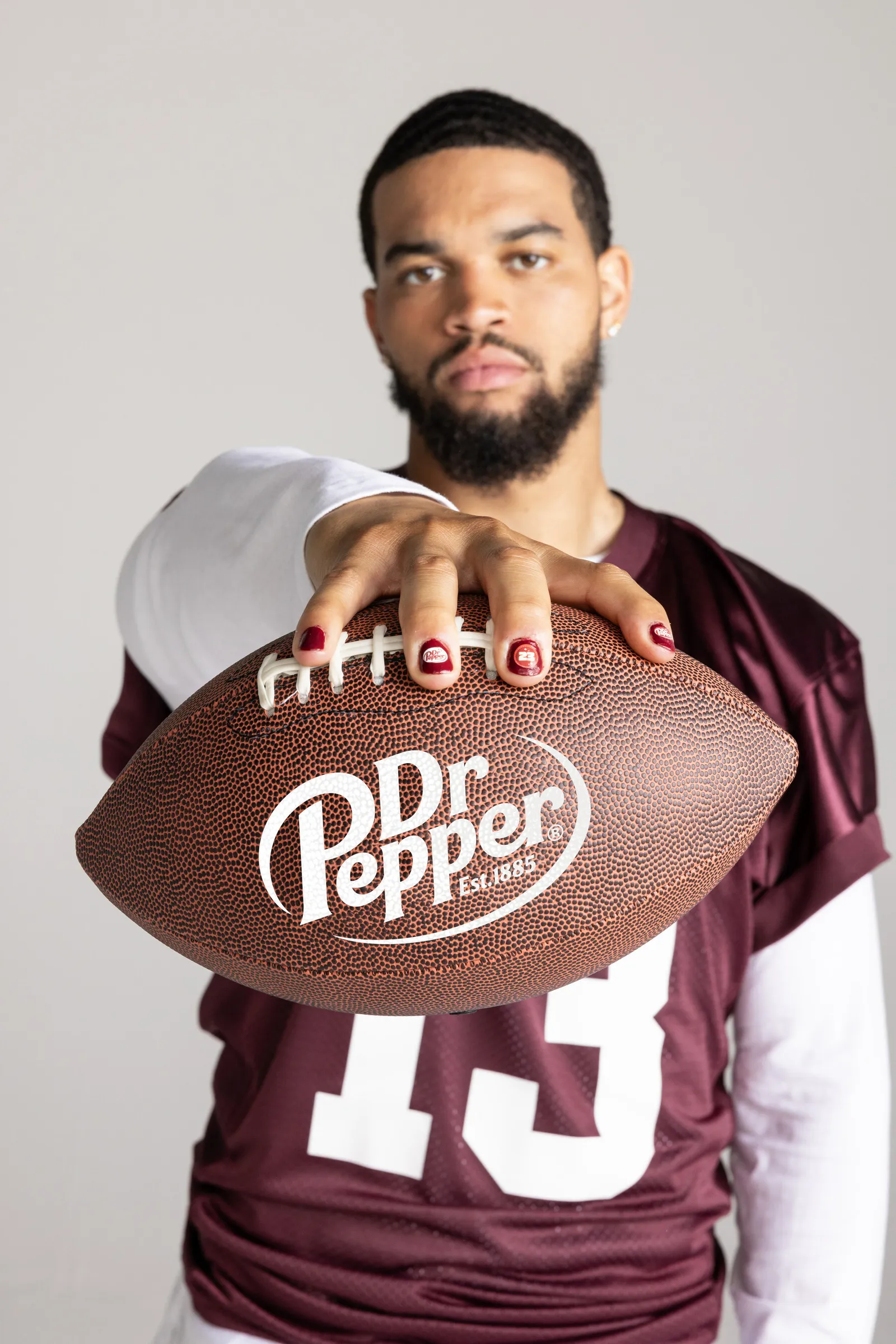
For the last few years, Dr Pepper’s marketing has revolved around college football. The brand in 2014 became the first official sponsor of the college football playoff, and was a first mover in the name, image and likeness (NIL) rights space when it signed quarterback D.J. Uiagalelei in 2021 to be part of its long-running “Fansville” campaign.
“Fansville,” a parody of high school sports dramas like “Friday Night Lights” with an ongoing story about football-obsessed fans in a fictional town, launched in 2018 and has remained a platform for advertising creative and player partnerships. The campaign, created with Deutsch LA, will be returning for a seventh season this year, Rakes revealed to Marketing Dive.
“There’s more runway for growth here,” he said. “Consumer interest in the advertising is high, it is breakthrough with some of the top-scoring, top-performing advertising that we have ever done on Dr. Pepper.”
College football continues to be a fertile creative space that allows Dr Pepper to connect with fans around whatever is driving conversations in the sport. For last year’s iteration of the effort, that meant teaming with Heisman trophy winning quarterback Caleb Williams to release “FANicures,” a nail polish kit that nodded to Williams’ divisive gameday tradition, itself inspired by his nail-technician mother.
“The nail painting thing … is part of his own brand, and it was a great way for us to bring that part of his branding into our own universe and play that up,” Rakes explained. “The secret sauce of ‘Fansville’ is authenticity and showing that we understand the space.”
Innovation drives recruitment
The carbonated soft drink market has been awash in new flavors and brand extensions as marketers rush to bring in new consumers and meet demands around healthier drink options. Coca-Cola has made its Creations platform a key part of its global marketing and Pepsi has stepped up limited-time flavors around seasonal food moments.
Dr Pepper is no different. Its Strawberries & Cream flavor generated more than $300 million in sales last year, while its new Creamy Coconut LTO is up more than 50% in volume sales in just its first five weeks compared to 2022’s Dark Berry LTO, per Circana data shared by the brand.
“If we want to think about growing this brand, not just next year, but in the next five and 10 years, recruitment is a really important part of that strategy, and flavors work harder than anything else at recruitment,” Rakes said.
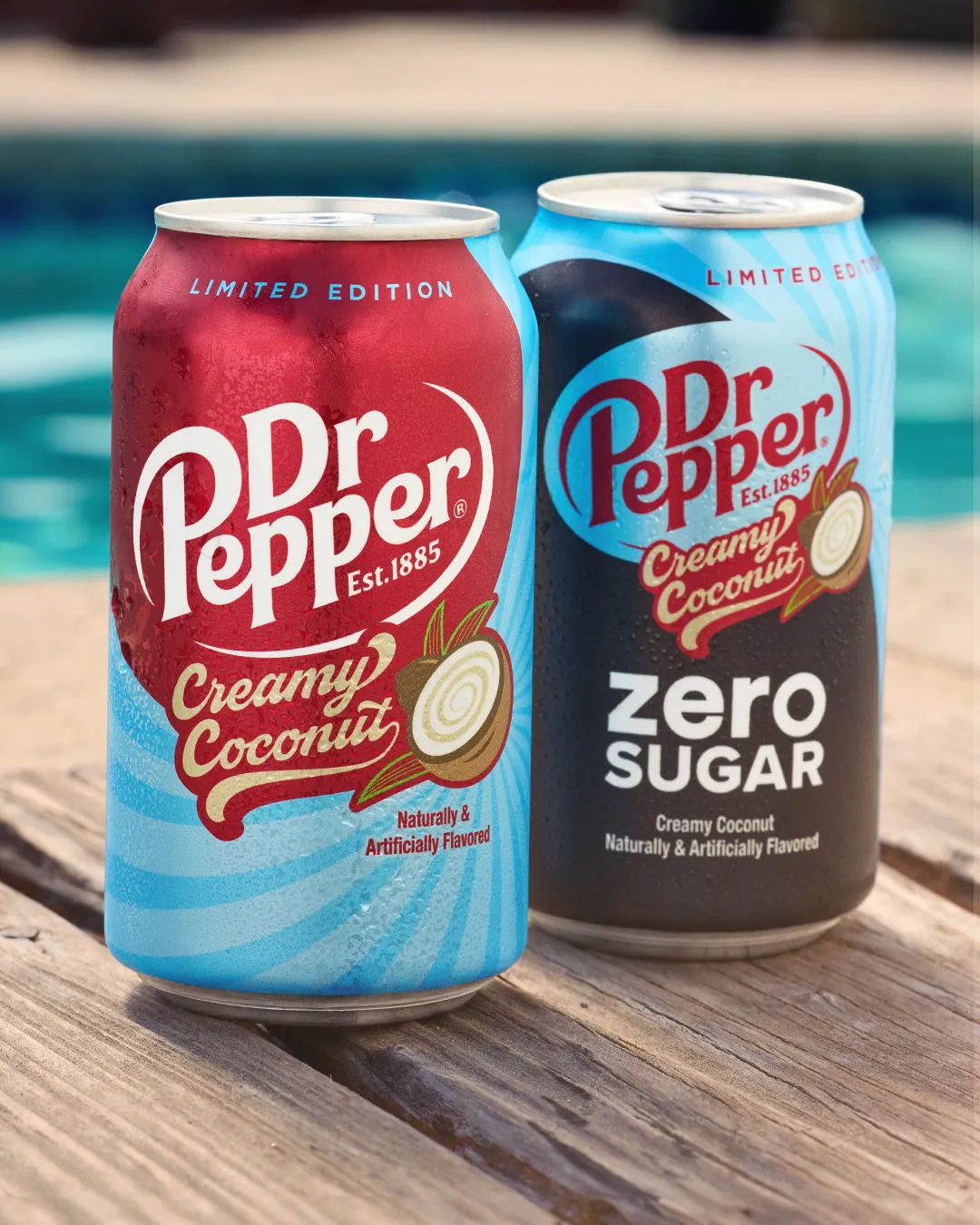
In general, new flavors over-index with younger and more multicultural consumers. But for a marketer that still derives more than half of overall growth from its core Dr Pepper and Diet Dr Pepper flavors, it is important not to overextend and get too far away from its core business.
“There’s a way to innovate in a category where you’re doing so many things that you can break the base,” Rakes said. “Flavor is important, but we don’t want to over-rotate to the point where our base business suffers. I think we’re striking that balance in the right way.”
Agile marketing model
Dr Pepper is lucky to have a loyal fan base with a core of high-frequency consumers. That brand loyalty and love shows up in different ways, as it did with a viral trend last month around drinking Dr Pepper with pickles. The brand was quick to jump on the trend with a TikTok video that has been seen more than 2.6 million times.
The speed of its response is due to a holistic, agile marketing model, Rakes explained, that relies on not just the data and tools that have become commonplace in modern marketing but having people and processes in place that can move the levers responsively.
“They have the flexibility and the rights to make decisions and to move with speed,” Rakes explained of a marketing team that spans brand and agency staff. “We enable people to make smart decisions and to go.”
That agility has helped the brand capitalize on avenues like college football and flavor innovation to play on the same field as Coke and Pepsi. But its relationship with its competitors is an unusual one, as it is largely distributed by Coca-Cola and PepsiCo. For Dr Pepper, consumer obsession and walking the line between consistency and disruption will help not just its brand but its partners.
“We know who we are, we know what we need to do,” Rakes said. “If we focus on that and if we do a good job, our partners all across the value chain — Keurig Dr Pepper, our shareholders, our distributors, our retailers — everybody should be winning.”



